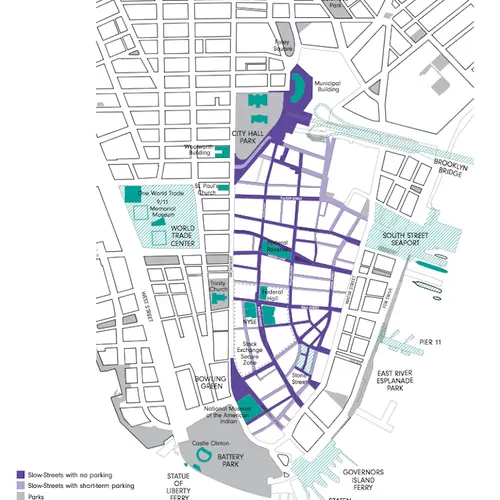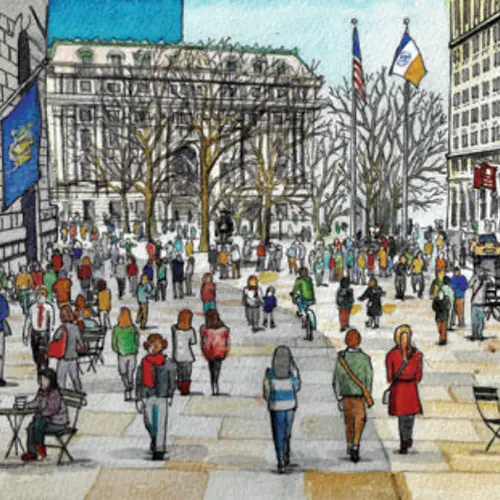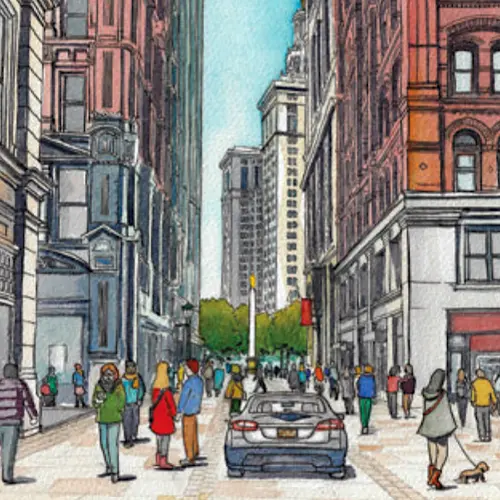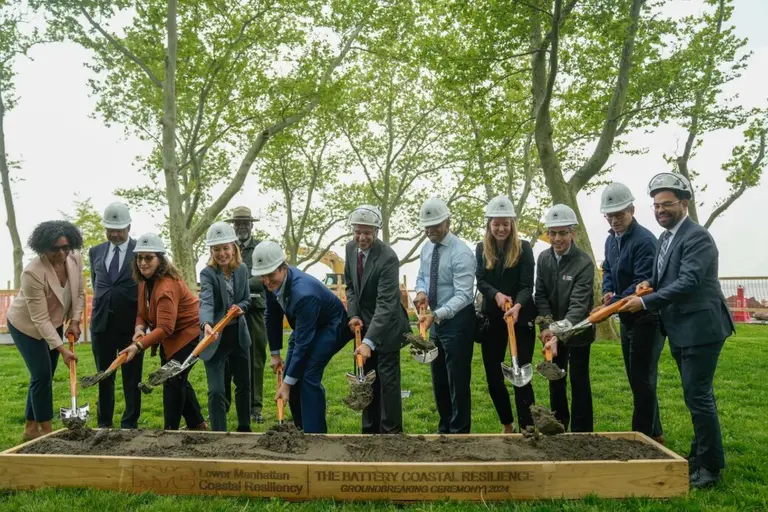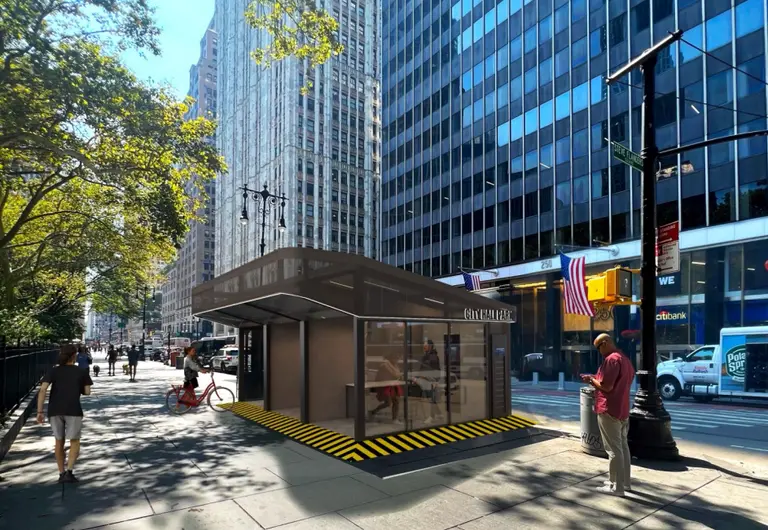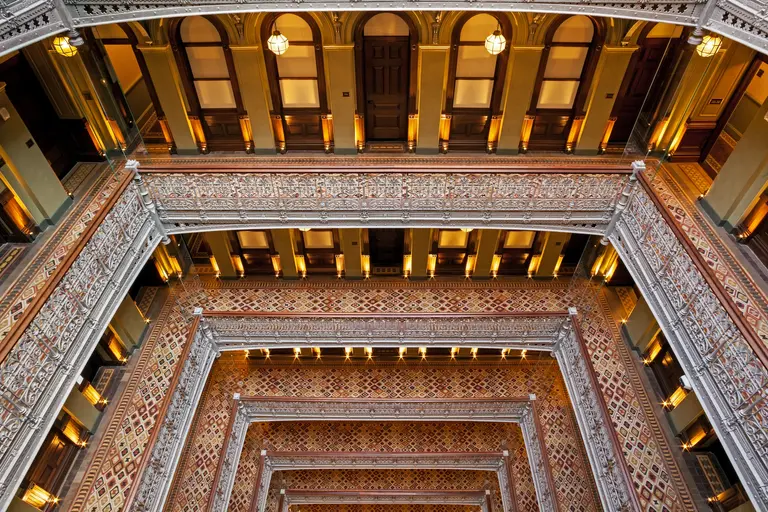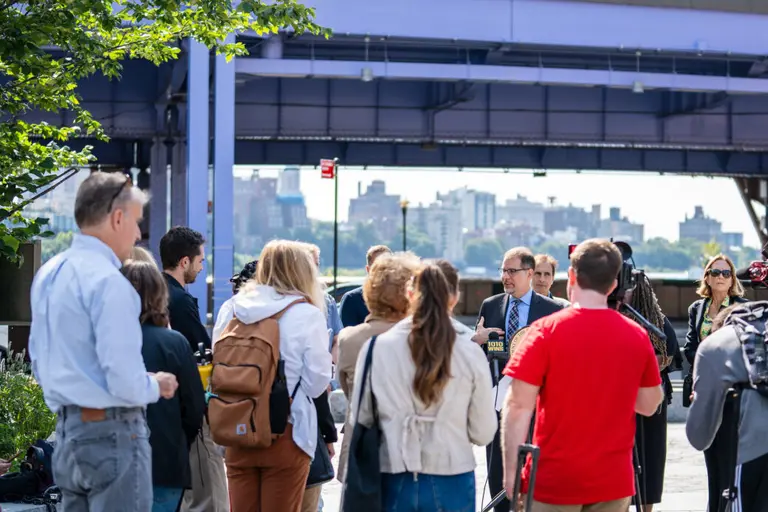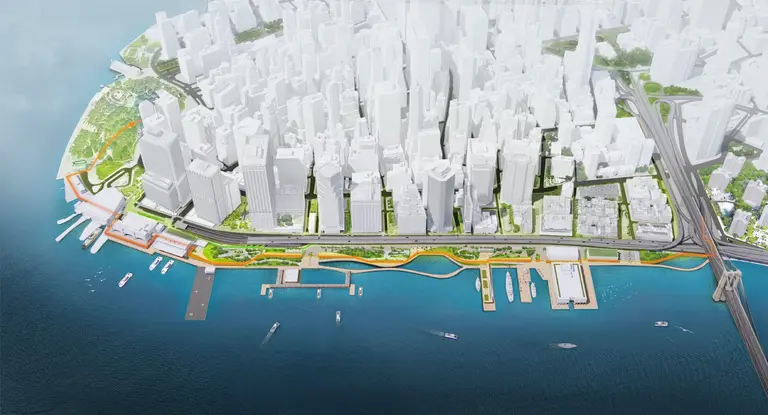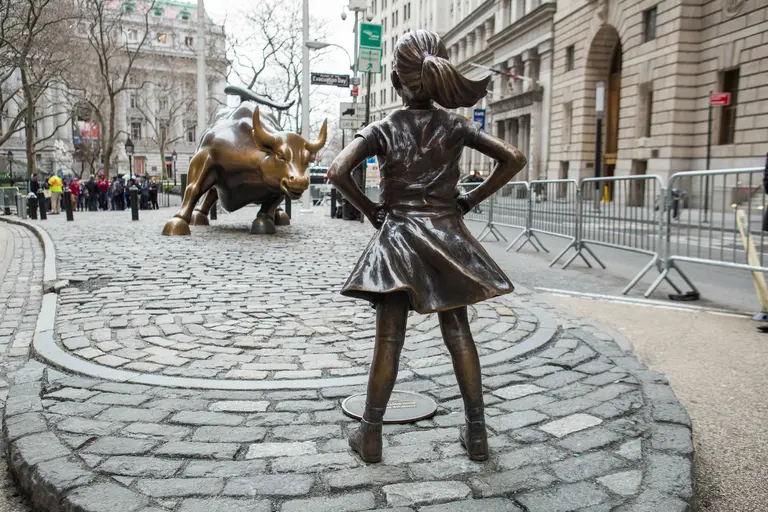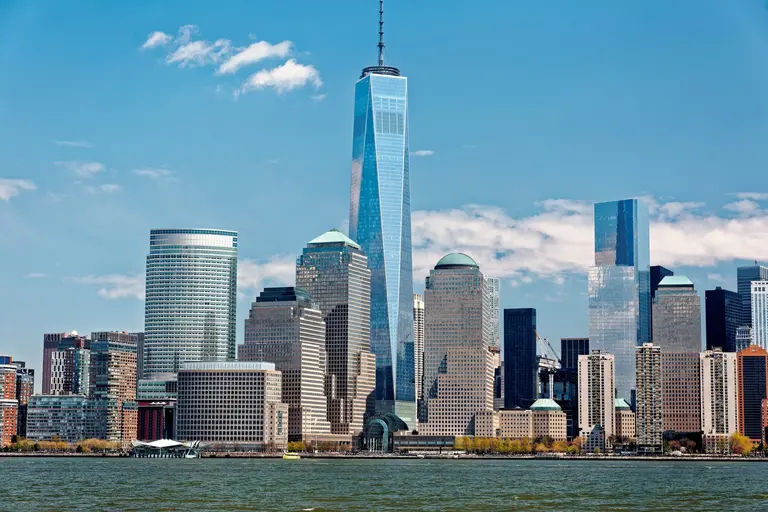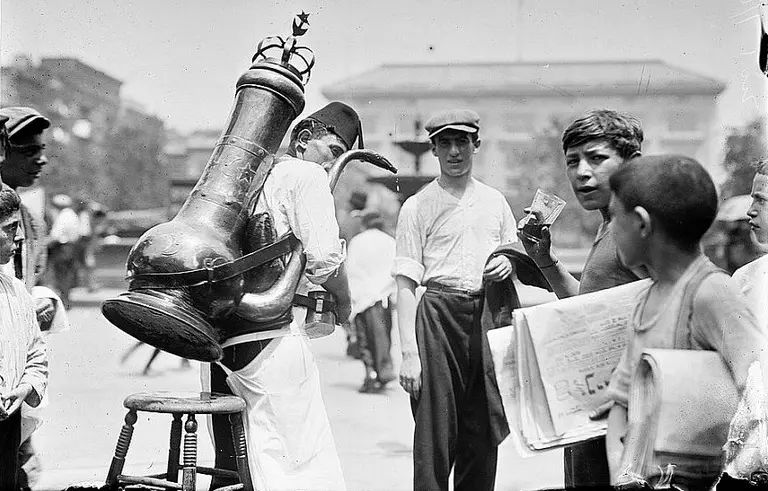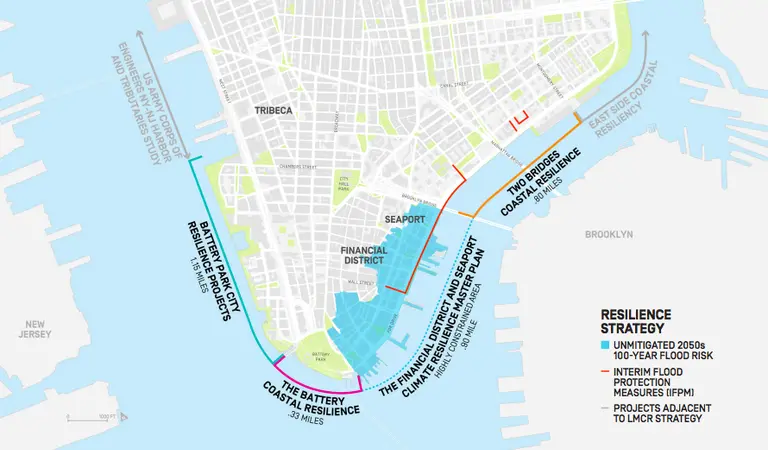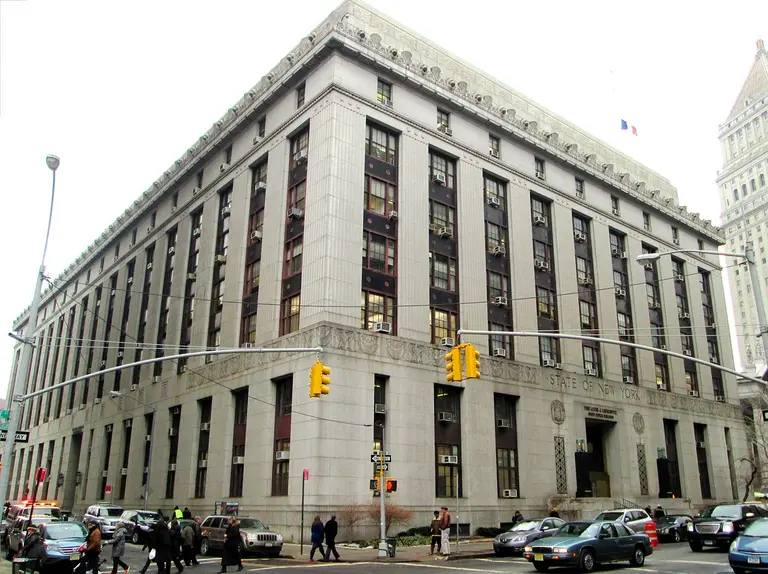Neighborhood association calls for a ‘slow street’ district in FiDi
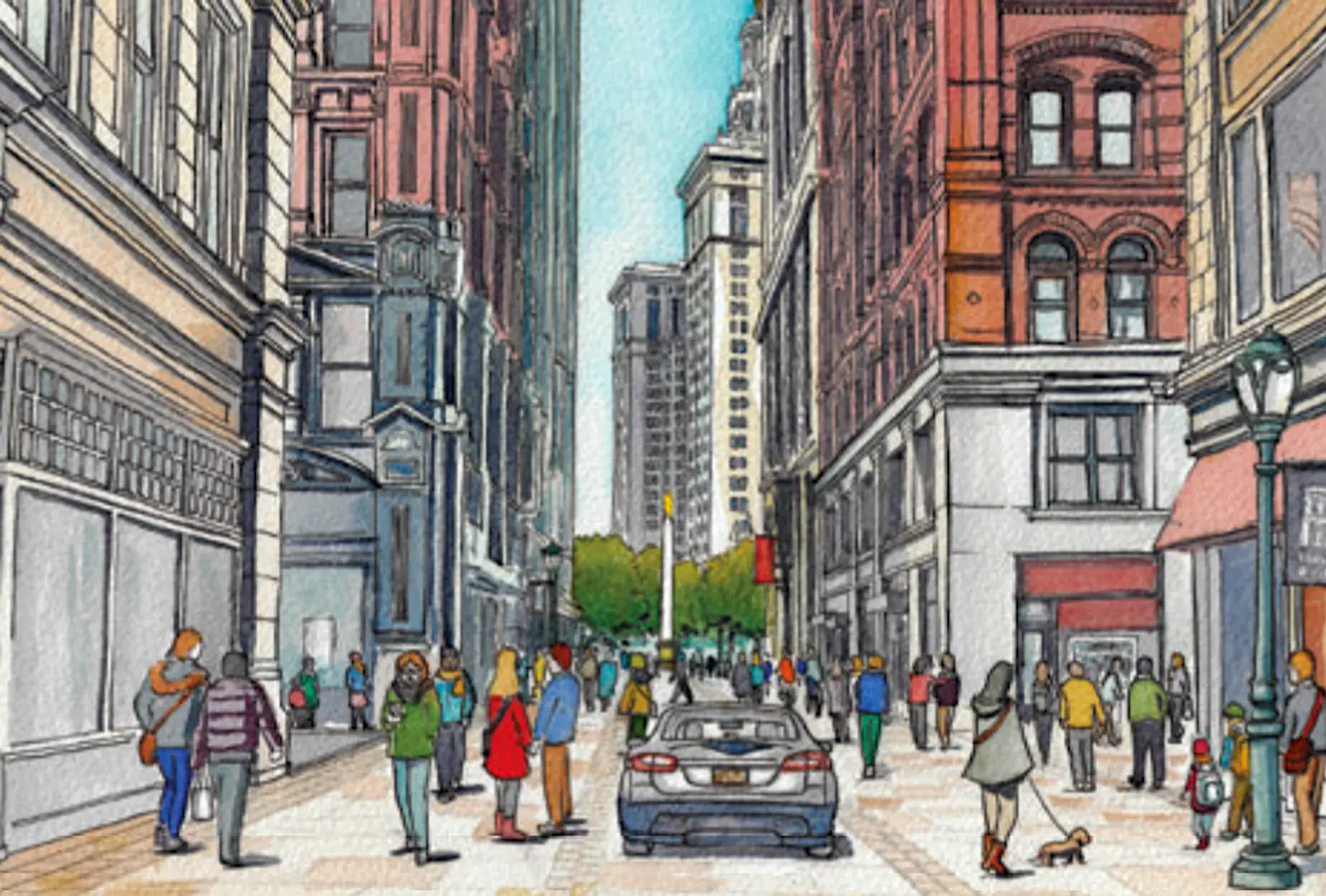
Sketch of Nassau and Beekman Streets as slow streets; via FDNA
A neighborhood association is calling for safer streets and sidewalks for pedestrians walking through Manhattan’s Financial District. In a report released on Tuesday by the Financial District Neighborhood Association (FDNA), “Make Way for Lower Manhattan,” the group calls for making the neighborhood a “slow street” district that would require cars to share space with pedestrians in an area stretching roughly between the foot of the Brooklyn Bridge and Battery Park.
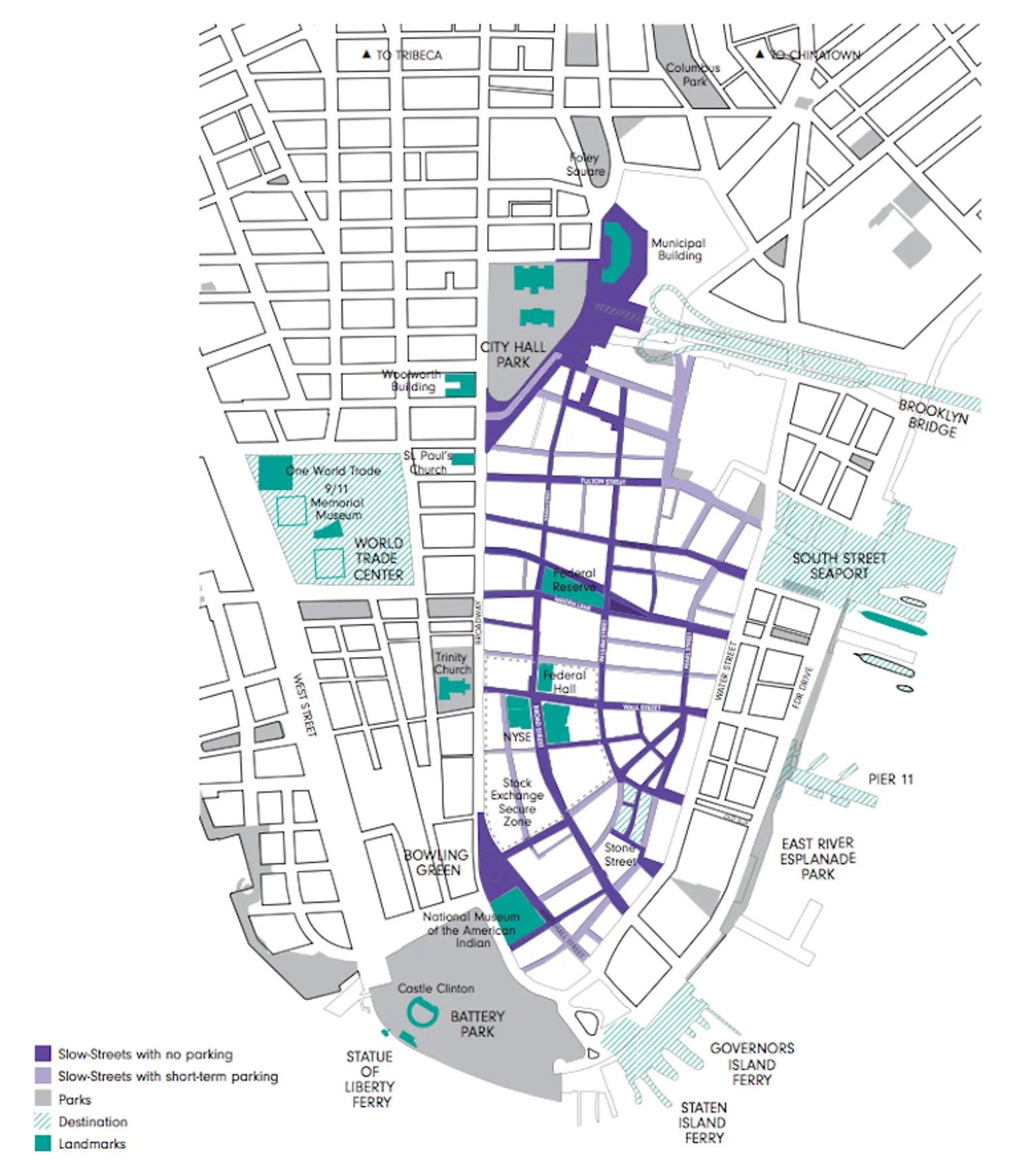
Map of the slow-street district proposed; via FDNA
The report addresses various obstacles walkers face in the tourist-heavy area, including construction scaffolding, piles of garbage, and lack of parking, mainly due to placard abuse by city agencies. Because it’s one of the oldest neighborhoods in the city, FiDi’s 17th-century street grid is being flooded with new skyscrapers, making streets more narrow due to construction sheds and scaffolding.
In 2016, Council Member Margaret Chin secured $500,000 in the city’s Department of Transportation budget to find mobility solutions for the area following a 2010 study by the agency. FDNA is calling on these allocated funds be used to implement “Make Way for Lower Manhattan” as soon as possible. And the association wants a pilot program that would test the shared-street idea by April 22, which is Earth Day.
“Lower Manhattan has evolved over the years to become a growing residential neighborhood that has retained its vital role as a commercial and tourist center,” Chin said in a statement. “With its unique colonial-era street grid, including streets and sidewalks, this increasingly congested area deserves more than just a ‘one-size-fits-all’ approach to essential city services like sanitation and street management.”
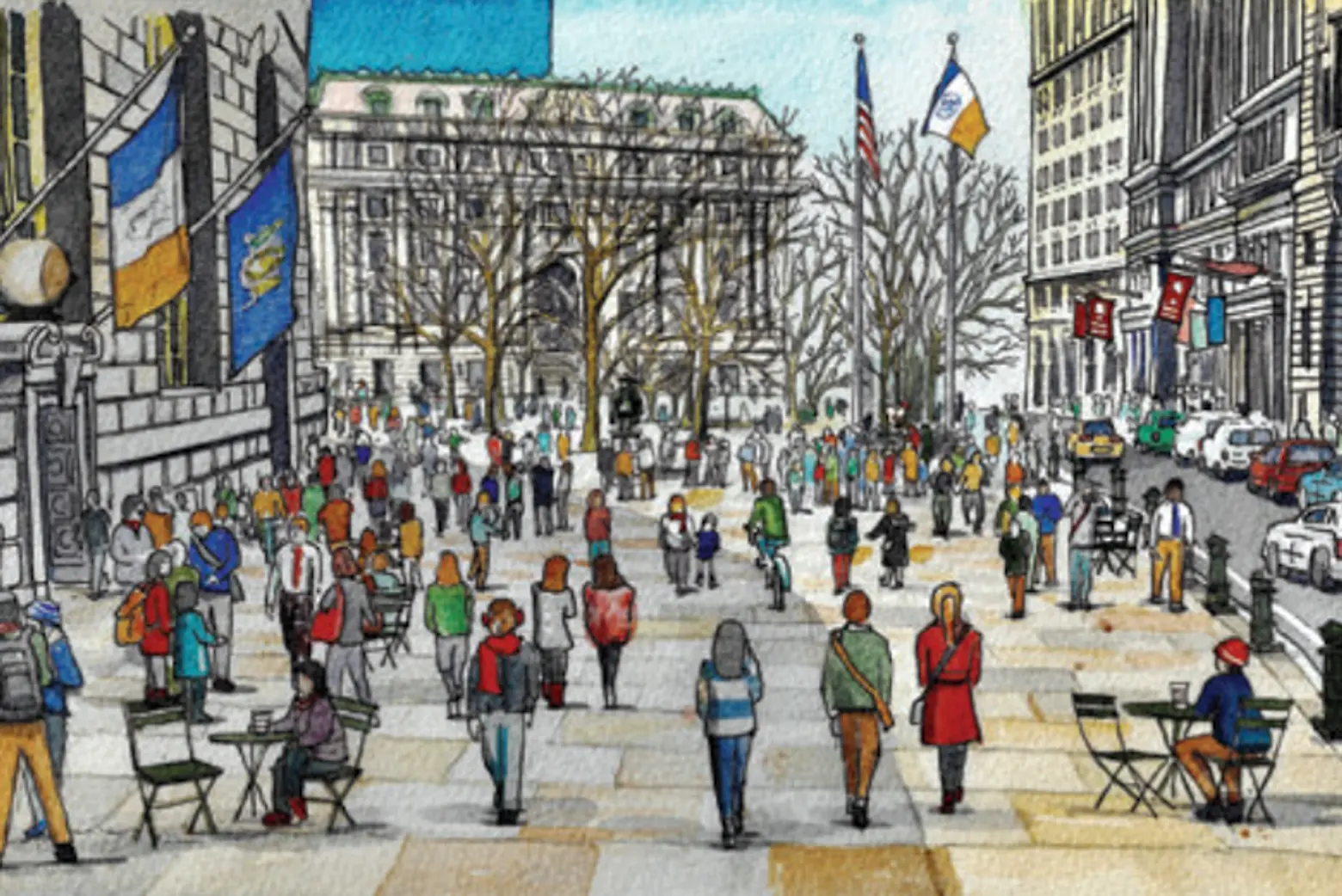
Sketch of upgraded Bowling Green park; via FDNA
The report cites cities like Amsterdam and Copenhagen as examples of slow streets that work. The shared street space in these cities have no traffic lights or signs, crosswalks, or painted road arrows. Instead, pedestrians and cyclists can walk anywhere at any time.
In the Financial District, the association proposes creating a slow-street district that spans from Broadway to the South Street Seaport, and from City Hall Park to Bowling Green. Because of the neighborhood’s rich history, FDNA says the district could feature a historic walking trail that better connects visitors to significant sites of FiDi.
Plus, the group suggests three gathering places to anchor the slow district, including ramps near the Brooklyn Bridge, a transformed Bowling Green, and an area near Federal Hall.
Scott Gastel, a spokesperson for DOT, told amNY that “we welcome input such as this, which we will review,” referring to FDNA’s report. Read the association’s full study here.
RELATED:
